How to Get to Tibet from Beijing: Train, Flight or Overland
Beijing is a natural choice for tourists arriving in China before traveling to Tibet. As a hub for international travel, it’s easy to reach from cities around the world, and as a gateway city to Lhasa, flight, rail, and overland routes are available for traveling to Tibet. Learn more about what the travel options have to offer with our guide on how to get to Tibet from Beijing.
How Far is Beijing from Tibet?
China’s Capital, Beijing, is in northern China, 150 km inland from the Bohai Sea. Beijing’s size and importance make it a self-governing municipality, not part of any province. The Tibet Autonomous Region is a province in the southwest of China that shares its southern border with India, Nepal, Bhutan, and Myanmar. The straight-line distance between Beijing and Tibet is 2,550 km.
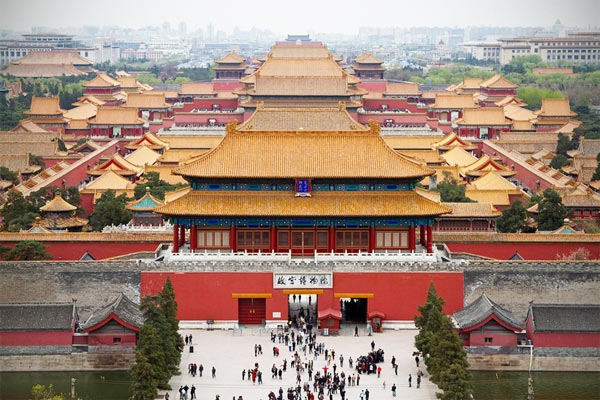 The Forbidden City in Beijing
The Forbidden City in BeijingSeparating the two locations is almost every type of terrain you can imagine. Broad plains, mountains, valleys, and the high plateau of Tibet itself. The train route winds its way across the landscapes on a journey of 3,757 km. In the final stretch, crossing over the highest railways in the world from Xining to Lhasa.
Getting to Tibet from Beijing by Train: The Scenic Route
The train journey from Beijing to Lhasa is an experience in itself. It travels thousands of kilometers across China with incredible scenery along the way. After passing through Xi’an, the train goes through tunnels and mountains, past lakes, glaciers, rivers, and vast fields. The final stretch is the famous Qinghai-Tibet Railway, an engineering marvel and the highest railway in the world. You can see sites like Qinghai Lake, the Kunlun, and the Tanggula Mountains. It’s a sought-after and unforgettable experience.
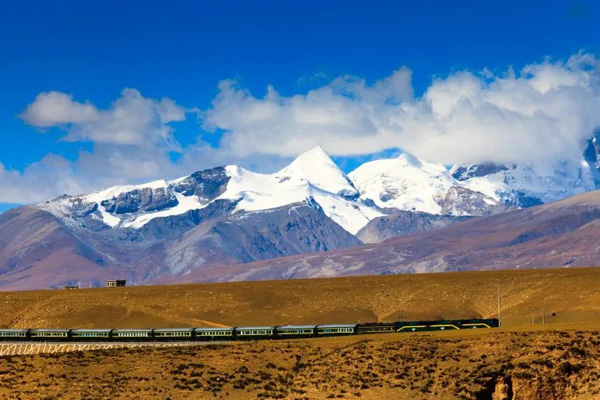 The Beijing to Lhasa train passes through the Tanggula Mountains.
The Beijing to Lhasa train passes through the Tanggula Mountains.Trains from Beijing to Lhasa depart daily from Beijing West Train Station. Train Z21 leaves at 19:53 and arrives 39h 43m later in Lhasa at 11:36. With almost two full days on the train, sleeper cabins are available. Hard sleeper tickets cost 720 CNY (100 USD). We recommend you book soft sleeper tickets. The added comfort and privacy are worth the extra cost. Soft sleeper berths cost 1144 CNY (160 USD).
Beijing to Lhasa Schedule
| Train Number | Departure | Arrival | Duration | Distance | Frequency | Ticket Price |
|---|---|---|---|---|---|---|
| Z21(Beijing-Lhasa) | Beijing West 19:53 | Lhasa 11:36 | 39:43hrs | 3,757km | Daily | ¥720 for hard sleeper ¥1140 for soft sleeper |
Getting to Tibet from Beijing by Flight: The Fastest Option
Flying to Lhasa is the fastest way to get there. You miss out on the scenery but can maximize your time in Lhasa. Direct flights to Lhasa Gonggar Airport from Beijing Capital International Airport are available daily from Air China and Tibet Airlines. The flight takes a little over 4 hours, costing between 230 and 270 USD, depending on the time of year.
| Airline | Flight No. | Departure | Arrival | Duration | Frequency | Price |
|---|---|---|---|---|---|---|
| Air China | CA4125 | 7:45 | 11:55 | 4h 10m | Daily | $276 |
| Air China | CA4123 | 12:35 | 16:50 | 4h 15m | Daily | $276 |
| Tibet Airlines | TV9816 | 14:55 | 19:10 | 4h 15m | Daily | $230 |
Cheaper flights can be found connecting through cities closer to Lhasa. Flights CA8651/CA4420 from Beijing to Lhasa via Chongqing cost around 127 USD. There is a 4 hour, 5 minute layover in Chongqing, increasing the travel time to 8 hours, 15 minutes, but the longer travel time comes at significant savings.
Flying to Lhasa from Beijing involves a sudden change in elevation, so extra caution needs to be taken to avoid altitude sickness in Tibet. Beijing is virtually at sea level, while Lhasa is at an elevation of 3,650m. When flying to Tibet, it is strongly advised to spend a few days in Lhasa acclimatizing before heading out to higher areas. Giving your body a chance to adapt, drinking plenty of water, and getting a good amount of rest are some of the best ways to prevent altitude sickness.
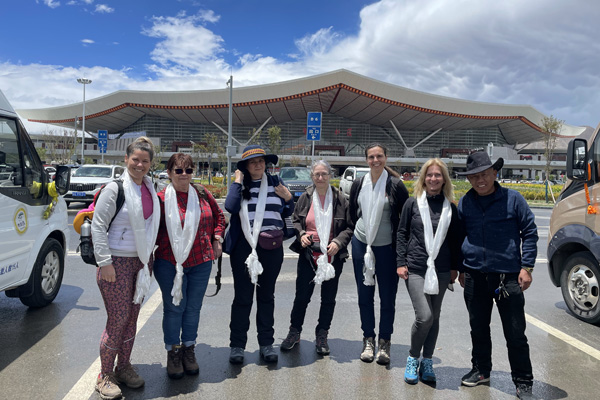 Picking up our clients who have just arrived at Lhasa Gonggar Airport.
Picking up our clients who have just arrived at Lhasa Gonggar Airport.Getting to Tibet from Beijing by Overland: The Adventurous Route
Travelers looking for a real adventure can take the grand, overland journey across China from Beijing to Lhasa. Highway G109 connects the two cities with 3,605 km of road through six provinces and spectacular terrain. It takes around a week to cover the whole distance, passing through Hebei, Shanxi, Inner Mongolia, Ningxia, Gansu, Qinghai, and finally Tibet.
The final stretch from Xining to Lhasa is the famous Qinghai-Tibet Highway. It’s over 1,900 km through the awe-inspiring Tibetan Plateau. Running parallel with the Qinghai-Tibet Railway, it includes the same awesome sights of mountains, valleys, alpine lakes, and vast plains.
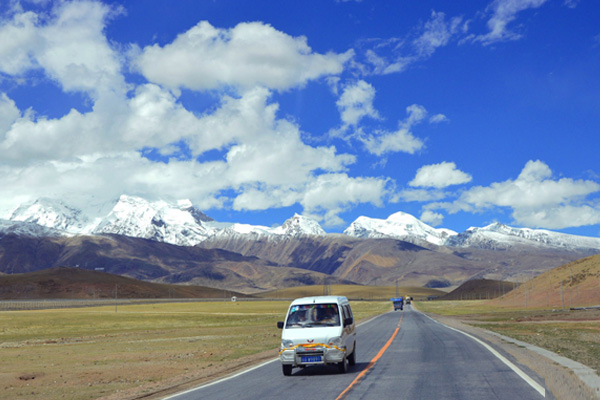 Traveling overland from Beijing to Lhasa will follow the Qinghai-Tibet Highway in the final leg.
Traveling overland from Beijing to Lhasa will follow the Qinghai-Tibet Highway in the final leg.An alternate route, with more natural scenery, is following the G318 Highway. It travels from Beijing to Chengdu, and then through eastern Tibet to Lhasa. The route from Chengdu to Lhasa is full of picturesque scenery, including many famous attractions such as Daocheng Yading, Ranwu Lake, and Midui Glacier.
Insider Tips for Traveling to Tibet from Beijing
Get your Tibet Travel Permit: All international travelers to Tibet require a Tibet Travel Permit arranged through a registered, local Tibet travel agency. You will need to show the permit before boarding a train or flight to Lhasa. Our tours include all permit related services, including delivering it to you before you embark for Tibet.
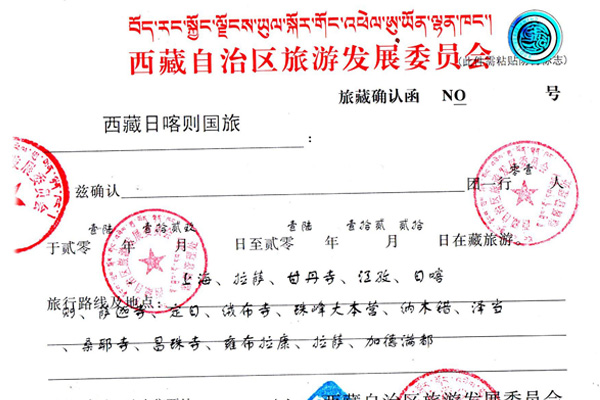 Tibet Travel Permit is required for traveling to Tibet from Beijing.
Tibet Travel Permit is required for traveling to Tibet from Beijing.Prepare for the high altitude: Travelers starting from low-elevation regions like Beijing are at risk of altitude sickness. Talk with a doctor before traveling about how to prepare and what symptoms to look out for. If you’re driving, you can stop in Xining to acclimatize for some time; otherwise, stay in Lhasa for a few days before going anywhere higher.
Bring local currency. Credit cards and digital payment are widely accepted in Beijing, but in Tibet, or on the way by road or train, many places may only accept cash. Ensure you have an adequate amount of Chinese Yuan for daily purchases.
Pack wisely. In Tibet, it is said you can often experience all four seasons in a single day. Plan for wearing layered clothing that will make it easy to adapt to the changing temperatures throughout the day, and to stay warm at night. On the long train journey or while driving, you’ll want comfortable clothes and convenient toiletries. Being a small towel, wet wipes, and ample tissue paper. Charging stations won’t always be available, so make sure to have portable power banks for your electronics.
Be ready for language barriers. English is commonly spoken by many people in tourist areas, but you will likely encounter situations where people only speak Mandarin or Tibetan. Translation apps can help bridge the gap, and learning some basic phrases in the local language will be greatly appreciated. In Tibet, our tour guides will help you facilitate communication with locals.
Conclusion
Beijing is one of the most convenient gateway cities for international tourists traveling to Tibet. With flight, rail, and overland routes, you can choose to make the journey to Lhasa part of the tour or just try to get there as quickly as possible. Rail and overland travel offers a chance to see the varied landscapes across China and Tibet, and the increased availability of flights is making travel easier than ever before. However you decide to travel, our private and small group tours will let you relax, knowing all the details are taken care of. Just let us know when you want to travel and how you want to get there, and we’ll handle the rest.
 BACK
BACK
0 Comment ON "How to Get to Tibet from Beijing: Train, Flight or Overland"